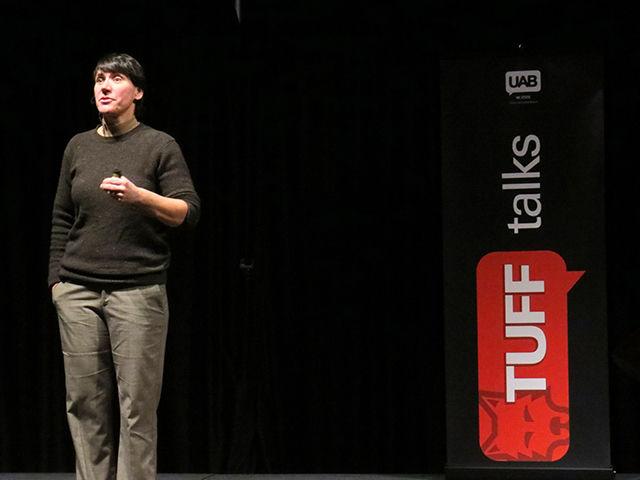Alumni and faculty had the opportunity to share their experiences using the mantra “Think and Do” to solve problems in their own lives and those of others Saturday at TUFFtalks in Talley Student Union.
“The speakers did an amazing job, and they’re all fantastic human beings,” said Cassie Brinkman, a senior studying microbiology and chairperson of Issues and Ideas for the Union Activities Board.
The keynote speaker for the event was Jason Dragos, an NC State alumnus of the class of 2008 and founder and CEO of HealthBeMe, a healthcare platform built to humanize healthcare. Dragos told the story of starting his company and how, early on, he was basing his thinking on goals and objectives before he found the true purpose behind what he was trying to accomplish with HealthBeMe.
When Dragos went to his first meeting with his investors, four men dressed in dark suits based out of a luxury high-rise in London, he was asked a question that he never forgot.
“I gave them my big picture HealthBeMe vision. I’m telling them about how HealthBeMe is creating a social platform that can empower people and connect people around their health condition, about how my vision is to humanize and democratize healthcare,” Dragos said. “And he said something to me that I’ll never forget: ‘Enough with all the warm and fuzzy stuff, how are we going to make our money?’”
Dragos said he stared at the man for about 15 seconds before saying, “I will never apologize that my company wants to help people,” and walked out of the office. This was the moment Dragos said he found his purpose and has worked every day since to further that purpose.
Dragos urged the audience to stop viewing success in terms of what you get and instead to view success as how much you are able to give.
“I promise you that you will get far more than you ever expected if you do,” Dragos said.
TUFFtalks was recently rebranded from TEDxNCSU to give organizers more freedom in the topics that are covered and increase relevancy to NC State students and faculty.
“With our first year, because we didn’t have the brand name, it was a little bit like ‘what is this,’ but as we continue to do this we will definitely build a name for ourselves and have this be a great recurring program,” Brinkman said.
Lauren Frey, a junior studying environmental science and women and gender studies, and Vishwas Rao, a junior studying chemistry, both found Valerie Faulkner’s presentation to be the most interesting.
Faulkner, a teaching assistant in the teacher education and learning sciences department, gave a presentation titled “Think Less and Do Right: The Achievement Gap.” In the presentation, she discussed the validity of the separations that we place between students early on and how that translates into an “achievement gap,” which she said is more accurately called an “opportunity gap” that structures the society we live in.
“Whenever we elevate some kids to a higher status we are cutting other kids, and it’s not even best for those kids who get elevated because they are told that they are better than others … and they also miss out on the diversity of perspectives that they would get in a larger and more diverse class,” Faulkner said.
Frey said she appreciated the message of Faulkner’s talk and was able to relate it to her experience in high school.
“I’m from Enloe High School, which has a huge achievement gap problem, so I was relating it back to when I was in high school more than anything,” Frey said. “I think it’s relevant to NC State because we need to train the next generation of teachers.”
Rao was interested in the idea of the opportunity gap and thought Faulkner addressed the main issue of how we converse with and treat students who are at the bottom of the “opportunity gap” well.
“I think that’s the important thing,” Rao said. “How can we change the way we address students, how can we better cater to students — because I think the moment we say ‘you have weaknesses’ and tell others ‘you have strengths,’ that’s already creating a social hierarchy, which translates to a lot of other socioeconomic and cultural inequalities.”








